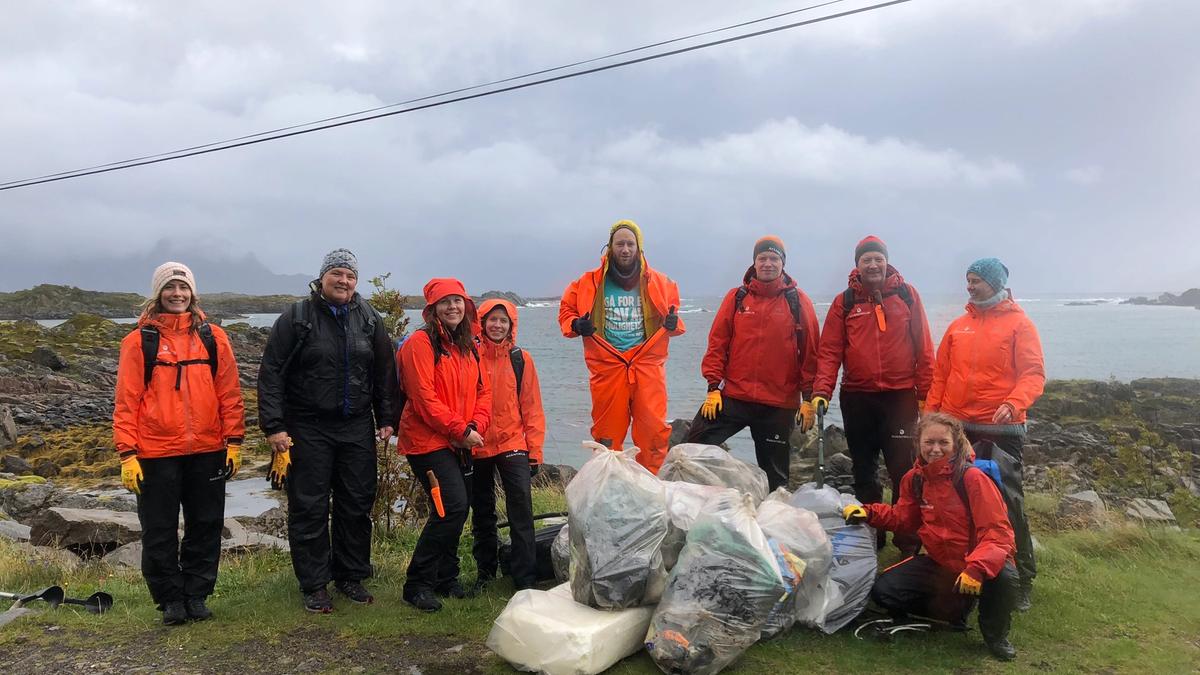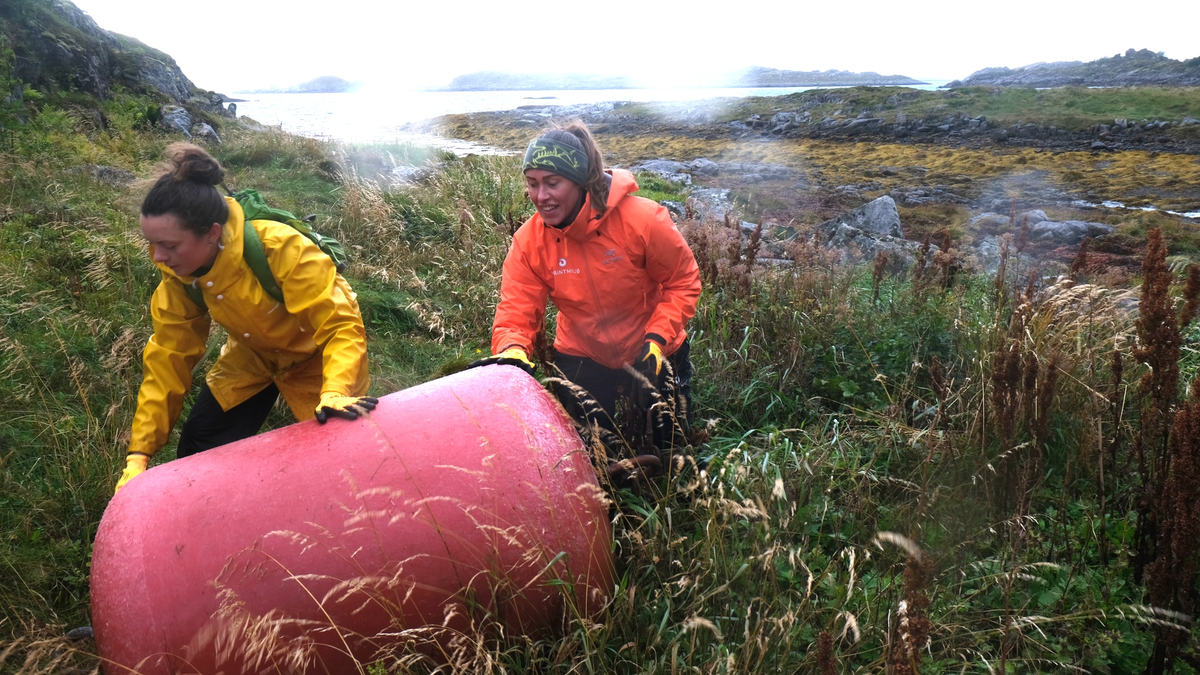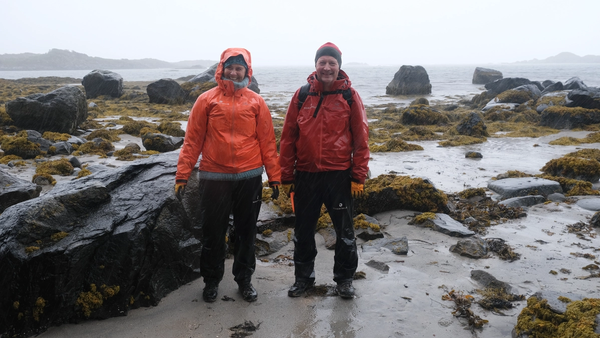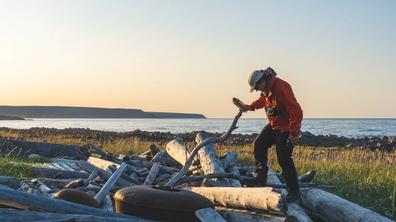Three kilometres of coastline were cleared and around 460 kg of marine waste were removed in gales and rain. Topping the list of waste types cleared up after the operation were ropes, pieces of plastic and polystyrene.

Together with local representatives from the 2020 TV Campaign for WWF and Clean Up Lofoten, the Norwegian Centre for Oil Spill Preparedness and Marine Environment tackled a stretch of coastline at Vestvågøya in Lofoten. The clean-up operation ran along the coast from the Finnhamn marina to halfway along Risøya further to the east. Two teams with a total of 17 people cleaned up from each side of the operation site and met at Sandvikneset after four wet hours. This meant that the operation was also able to clean the Ramnen headland. Jann-Egil Gjerde from the Norwegian Centre for Oil Spill Preparedness and Marine Environment led the operation and is happy with the results.
– We completed a clean-up operation in which we were able to remove waste from a large area in proper, awful northern Norwegian weather. We are happy with that, Jann-Egil Gjerde said after the operation concluded.

Ropes, cans and plastic trapped in the sand
The heaviest find of the operation was a buoy that had to be rolled along the beach to the temporary storage site next to the road. The most frequently cleared waste types by number were ropes, cans and polystyrene. The most time-consuming clean-up activity was the removal of plastic bags and tarpaulins buried in soil and sand. Many of these were porous or disintegrating after spending years exposed to wind and weather. CEO Ann-Helen Ernstsen did not give up trying to get them loose. She dug several large tarpaulins and plastic bags out of the sand at Sandvikneset.

– You just have to grab your shovel to loosen plastic bags and tarpaulins when they are buried in sand and soil. It is important to assess whether the removal of buried plastic causes more harm than good, especially when the plastic is stuck in soil and vegetation, she says.
Monica Kleffelgård Hartviksen from Clean Up Lofoten presented the clean-up figures from the environmental project so far in 2020. The records taken so far this year show that ropes with a length of less than half a metre are the top object. Rope was also the most collected waste type during the centre’s clean-up operation. Here are the top ten finds from the clean-up operation and the top ten from Clean Up Lofoten in 2020 to date.
| Clean up Valberg | Clean up Lofoten 2020 |
|---|---|
Ropes under 50 cm | |
Cork floats | |
Polystyrene pieces over 5 cm | |
Foreign plastic bottles | |
Rope over 50 cm | |
Norwegian plastic bottles | |
Bottle caps | |
Food packaging | |
Lids and caps | |
Packaging ties |




